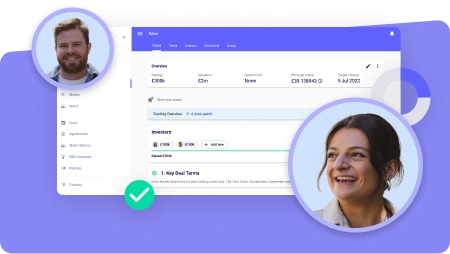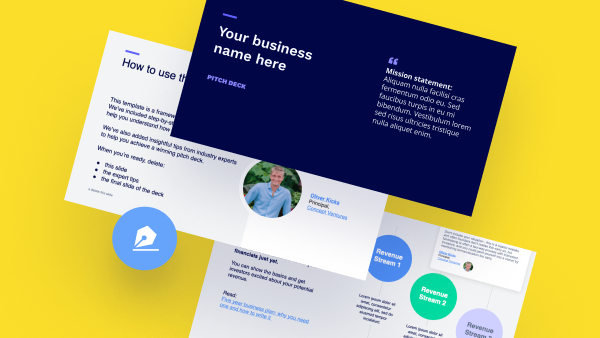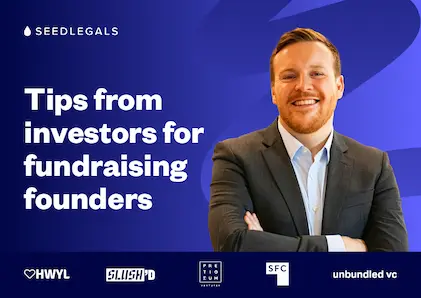Read transcript
Anthony Rose: So let us begin. So Hello, everyone as a founder. You think that what you’re going to be focused on is just products, custom, acquisition, and everyone’s going to be intellectually on the same plane. Your correspondence with your team is going to be, you know, on Github tickets and slack messaging, and after you’ve dealt with building a lot of stuff you’re going to, then spend your time acquiring customers.
Anthony Rose: and lo and behold, it turns out life is not as simple. And I learned this
Anthony Rose: 30 years ago, when I had my own company for a while, and then I got invited to build a company, and I learned
Anthony Rose: on like Day 4 that you know, this person was really great at doing this, but didn’t want to do this. They want to do that. And this person didn’t get on with this person. And these people didn’t agree with me. And oh, my God! I learned that growing a company was, and a team was not about just a set of tickets. It was a psychological exercise.
Anthony Rose: So when I was at an event in New York a few weeks ago, and saw Thejas on a panel talking about building and tuning your team. I thought we’ve got to get on a call together and do a webinar to help all startups grow faster and avoid the pain points and deal with complicated problems like it’s not working out with someone you’ve got to terminate. How do you do it? So, without further ado.
Anthony Rose: let me turn over to phages to introduce himself, and then take it away on a fabulous presentation that He has created just for us.
Thejus Chakravarthy: Thank you so much, Anthony. 1st off I would have appreciated a little bit more ado, so I could have a little less time on camera. But we’ll make without further ado. We’ll be fine. We’ll be fine. My name is Theja Chakravarthy. I’m the business mechanic, and I primarily focus on people process and technology in that order. So what we’re going to do is we’re going to run through a few basic topics. I’m sure that some of you have seen the write ups in the Linkedin Post about what we’re going to cover.
Thejus Chakravarthy: I’m sure that Anthony has probably worked with some of you before. To sort of illustrate what what you guys are gonna focus on.
Thejus Chakravarthy: And what I’m going to try to do is cover some general topics. And I hope that what this will do will spark discussion and spark ideas, because the challenge is that there is no one. Size fits all solution for every organization, and we can almost never just rely on. Well, this will always work, or this will always change
Thejus Chakravarthy: in the same exact way, because every company is a
Thejus Chakravarthy: side effect of the people within it. Your culture, your process, your technology, will all depend on the people inside your company
Thejus Chakravarthy: rather than approaching it from the perspective of well, I want it to do this. I want my company to do. XA or B is not nearly as important as well. Who is in my team. And what can I accomplish with these people?
Thejus Chakravarthy: So to get started? Let’s talk a little bit about top down control systems, something that I advocate are self organizing systems. But if we look
Thejus Chakravarthy: here on the screen on the left hand side, you’ll see what is the org chart for the Tokyo metro system.
Thejus Chakravarthy: Now, this is a standard traditional org chart, and the Tokyo metro system also functions in a standard traditional top down control system. The decisions are made on high, and they’re pushed down low. And then any actions that are done down low are pushed back up in metrics or reports, and what the Tokyo Metro system has done. If you look on the right of the slide is that’s the Tokyo Metro map
Thejus Chakravarthy: which have living in New York and also seeing the London underground that looks pretty complicated, and that, you know, that took tens of thousands of employees, tens of thousands of man hours to get something like this built and get something like this done. So keep that in mind. This is what a top gun control system can do. Now, this is fiserium polycephalum, which is a slime mold.
Thejus Chakravarthy: which is, it doesn’t have a nervous system, and it’s 1 of the earliest forms of eukaryotic life on the planet. So at the very least we can say, Oh, hey! At least it’s got a nucleus. Now all this slime mole does is send out tendrils in every direction. If the tendril hits food, it gets fatter. If it doesn’t, it gets thinner. And that’s it. That’s all. This does what’s interesting, though, is a researcher in Tokyo in 2010, took a petri dish
Thejus Chakravarthy: and put a tiny yellow blob of fisarium in that Petri dish and put little oat flakes which is his preferred food in the lab setting in the Petri dish to illustrate where all the major cities were, and in 26 h this physarium mold replicated the network map of the Tokyo rail system.
Thejus Chakravarthy: So what does this show us? And what are we seeing here? Well, the fact is that a self-organizing system can replicate the efforts of a top-down control system with minimal effort. Because all this mold is doing, it’s not smart. It doesn’t have a nervous system. All it’s doing is, it’s doing basic behavior
Thejus Chakravarthy: through a feedback loop.
Thejus Chakravarthy: And that feedback loop allows complex behaviors to erupt. What’s interesting, though, is, if you were just drop fiserium in a petri dish. You just end up with this, which yes, that’s a complex shape I like how mandelbrotty it is. I like the little fractal designs. It’s very cool, but there’s no structure to it.
Thejus Chakravarthy: So something to consider when you’re talking about self-organizing systems is your own structure. So instead of approaching your organization from a top down model where this has to be done, and then this has to be done. Consider an In to out model where the vision of your company is the fixed, unchanging point.
Thejus Chakravarthy: and then you build your strategy around that, and you build your tactics around that your processes and tasks end up being where your slime mold mentality, kind of functions. You want those to be simple behaviors with feedback loops, and that will give you the complexity you want. This also allows you to sort of separate out the time horizons, because your vision is fixed and unchanging, but your tasks may have to adapt on a daily basis.
Thejus Chakravarthy: Now, between each of these layers every organization is going to be a little different. Maybe you set your strategy once a year. Maybe you set your strategy once a quarter, but as long as you can keep in mind that it’s better to have a series of tasks with feedback loops to provide the complex behavior you want. You don’t have to worry about having a top-down control system and just micromanaging your way into insanity.
Thejus Chakravarthy: So that’s the 1st part which I believe we were going to talk about, which was just self-organizing systems.
Thejus Chakravarthy: But let’s talk a little bit about formal versus informal groups, because I feel like this is also something people run into as a challenge. So a formal group and an informal group these are I/O psychology terms. So it’s what I did my undergraduate in. So I’m a little fuzzy on how it’s applied. But the traditional model around a formal group is just like the top down control system where information has to go up, the chain
Thejus Chakravarthy: be reacted to, and then come back down the chain. But formal groups have a reason and have a purpose. They provide a central effort. An informal group doesn’t necessarily transmit information up and down. It just transmit information in every direction.
Thejus Chakravarthy: and everybody who receives that information reacts in that time and in that place. So an informal group’s information sharing is sort of like a bee. So the forager bee goes out it finds something. It comes back to the hive and says, look! I found this flower. Well, that’s great, because now all the other forager bees know that there’s flower. They know there’s food, but the Forager bee doesn’t go to find the Queen. That doesn’t make sense. It literally doesn’t make sense in the instance of this informal group.
Thejus Chakravarthy: But that’s also like making. That’s also like the founder of an organization telling a single sales lead
Thejus Chakravarthy: how to generate more leads. It’s that’s the problem. But in a formal group that’s normal, that’s considered normal. So what we need to consider is using both at the same time. So you have your formal group for your hard decisions, for your structure, for your communicating, determining your strategy, determining your tactics. That’s a formal group situation. But your informal group situation tells you you should be transmitting that information equally to everyone.
Thejus Chakravarthy: because the more people understand the information used to make a decision, the less you have to explain that decision.
Thejus Chakravarthy: So if you approach it from a founding perspective, from a startup perspective, if you are only communicating critical information to the people who you deem necessary to know this the issue is going to come up. That somebody who you didn’t communicate to is not going to understand why they have to do something.
Thejus Chakravarthy: So communicate everything to everyone within your organization. Transparency is key here. You want to make sure everybody’s on the same page as opposed to approaching that rigid top down structure of just moving up and down.
Thejus Chakravarthy: Anthony, you look like you have a question.
Anthony Rose: That’s a great point. You can see the question. Look on my face. All right. So here’s the challenge, right? Which is, when you know as a CEO. You’ve got all these ideas in your mind, and the problem is, if you share them, all people may get confused about what’s an idea. What’s research, what’s action and what’s a target and revenue? And you know, greed with the board.
Anthony Rose: So I am a big fan of wide information, sharing Etsy legals
Anthony Rose: pretty much. All our slack channels are open. Everyone’s encouraged to have ideas and post them. You know, on our team stand up so they come up with ideas and things we talking about. But how do you make sure that your team don’t hear something and think, Oh, my God! We’re now off in this direction or be confused because they’re hearing many things, but don’t understand what’s an idea and what’s an actionable, you know, company goal.
Thejus Chakravarthy: Sure. And this is this is a function of context, right? So one of the reasons why we have that behavior that you mentioned where somebody hears something, and they think, Oh, that’s not an idea. That’s a direction is because we aren’t clear with saying, these are ideas. This is a brainstorming session. We’re just talking about this. We need to find a better solution. And we want to include you into that conversation.
Thejus Chakravarthy: On the other hand, once you’ve made that decision. How are you transmitting it to the rest of your company? Are you just having a stand up meeting? Well, probably not a good idea. If it’s something that people have to act on. My stance on. This is if it’s something that you need people to cohes around, you want to have a unified vision around. Please write it down.
Thejus Chakravarthy: just write it down somewhere, make it official and written and documented. And these are our strategies. These are our tactics. This is what we’re doing. But if it’s an in-personal conversation because of the increased bandwidth, the body language, the tone of voice, the carriage, the noticing a questioning look on their face. Things like that that’s best for discourse. That’s best for discussion and brainstorming and coming up with ideas. And if you don’t clearly define. Is this a discussion versus this is
Thejus Chakravarthy: definitely direction.
Thejus Chakravarthy: then any sort of information sharing starts breaking down at that point. And I feel like, if you do not, I feel this way. But I’ve also seen some evidence of this. Unfortunately, it’s anecdotal, so I feel uncomfortable making a prescription.
Thejus Chakravarthy: I feel like. The reason why we have these separations is a conflation of autonomy and authority in a lot of our discussions, because somebody who has additional authority in the organization may actually say something like, Well, we’re doing this. This is my direction to you.
Thejus Chakravarthy: and that is conflated with.
Thejus Chakravarthy: well, are we having a discussion about what we could do? Or are we having a discussion about what we are going to do? And the distinction? There is cultural in my experience, at least, and I’m sure it’s the case in the Uk. In the Us. Definitely the case. But in some of the other international teams I’ve worked with, it’s a hundred percent. A internal cultural thing.
Anthony Rose: Okay.
Thejus Chakravarthy: Does that answer your question?
Anthony Rose: Yes, and I think now great point. But now one other thing which is, I love the example used of the, you know, bacteria growing in all sorts of directions, but given goals to get to. And I think this is really the sweet spot in a company to harness the brains of everyone, you know. If the senior team mandate the set of things to be done
Anthony Rose: that has an advantage that it’s clear but disadvantage. It’s only leveraging the brains of a few people and maybe older people. So they’re not tapping into all the things you could do. If, however.
Anthony Rose: it’s completely devolved, you get random things. And that leads to what I think was the problem with Google. Some years ago they started all these amazing projects right? You got a few 1,000 signatures you could you get funding? And then, a few years later, they just killed all of those projects because they didn’t align with the structure. So if you know the answer, lead us to.
Anthony Rose: How do you tap into the best of both worlds, which is, you know, the as a company the senior team are communicating the the goals of the company, the areas, the product focus areas. But leaving it to the team to innovate and come up with ideas within that framework.
Thejus Chakravarthy: That’s an interesting point. And I think that almost directly lines up with the next thing we were going to talk about, which was the balance of what I call the 3 A’s. Which are wait, let me make sure I’m doing my slides correctly. Here, Nope, Nope, Nope, Nope, there we go backward.
Anthony Rose: All right. Well, I’ll hop off and get back to you driving.
Thejus Chakravarthy: So authority, autonomy and accountability. Those are basically the 3 A’s that define almost every role in every company at any time. Authority being
Thejus Chakravarthy: wait. Sorry. I also messed myself up here with my slides. There we go. So authority is basically the power to make a decision. Autonomy is the freedom to execute on the decision and to pick up whatever you need to do to pull that off.
Thejus Chakravarthy: and accountability is the responsibility for the outcomes. Now, the problem is going back to top down control systems. Most top-down control systems don’t consider this. This isn’t something you think about, but you also don’t enforce it. You don’t ensure that people are maintaining this balance. And the problem with that is that people who are in response in positions of authority
Thejus Chakravarthy: the people who are setting your direction.
Thejus Chakravarthy: They have to understand that with authority comes autonomy and accountability. So if you take away someone’s authority, if you say you don’t get to make a decision about this. You also are by nature taking away their autonomy and their accountability.
Thejus Chakravarthy: And the more authority a person has over any given process, the more they have to be held accountable for its success or failure, and the greater the amount of autonomy they must have within that process. So, going back to the, to the question you posed, which was, Well, how do you set the tone? Well, you understand that with all of this comes balance. So
Thejus Chakravarthy: I mean, next slide. There we go. So the layers of delegation because what we’re talking about is delegation here, right? We’re not simply saying, Well, I’m just going to let everybody in my organization have the same level of authority, autonomy, and accountability, and say, Okay, this is how a company works, you define somebody in your organization as having more authority than someone else, and when you delegate effort and you push it over to somebody else. It helps to envision the balance you are striking.
Thejus Chakravarthy: So the lowest level of delegation is, somebody is told to wait until they’re directed to do the next thing. Think of helping a child brush their teeth right well, 1st take out your toothbrush and then wait, and then you put on your toothpaste, and then you wait. That’s wait until directed. But the highest level of delegation is more. Well, I don’t really need to check in on you that you’ve brushed your teeth.
Thejus Chakravarthy: But you know, if we go to the dentist once a year, and the dentist says you haven’t been brushing your teeth, let’s do it and report routinely. That’s all the way down there, and the numbers that I put up here are rough
Thejus Chakravarthy: ballpark thinking ideas. So if you’re all the way down at wait until directed. 90% of the authority, autonomy and accountability is still in your hands. You’re still you should still be held mostly accountable for. Whether or not, this succeeds or fails, but if you get to the point where you can give up some of your authority to somebody else.
Thejus Chakravarthy: you’ll find that you still have some of it yourself, because you’re the person who did the delegation.
Thejus Chakravarthy: So if you’re in a position of authority and you’re setting a target and you’re saying we want to go there. But we want you to feel like you can take whatever actions you need to. That person needs. The authority
Thejus Chakravarthy: of a certain level, to have the autonomy, and to have the accountability for their success or their failure.
Thejus Chakravarthy: and with increased delegation, with increased levels of delegation, you end up with the situation where micromanagers tend to push back.
Thejus Chakravarthy: because the idea of not controlling somebody’s daily output and running the risk of that person may create something you didn’t want
Thejus Chakravarthy: is too high and too much of a risk for them, but that the trust that you have to learn to build, and also
Thejus Chakravarthy: the hardest part of building out these sorts of teams is learning to let go. That’s key in every team, in every organization, whether we’re talking about companies, or we’re talking about informal groups, or we’re talking about any situation. It’s about you learning to let go a little bit, but also accept that that person might fail. And that’s okay. As long as you can. Then in a feedback loop sort of situation, curtail them.
Thejus Chakravarthy: So it’s okay for the slime mold to grow off in one weird direction, because you know that the target’s back here and it’s just going to fizzle out and come back around.
Anthony Rose: All right.
Anthony Rose: So let me hop in, because this has been a fantastic masterclass for any founder, and I think one of the things is, you know, the people watching this are probably really early stage founders, and I think for an early stage founder. Initially, the company is kind of just you and a co-founder. So you’re doing everything.
Anthony Rose: And then you start hiring people, and you’re probably better at doing their job than they are on day one. But of course, that’s not going to scale. Eventually, they have to do their jobs, and you have to do, not their jobs. And so what you’re really doing
Anthony Rose: is consciously or unconsciously going through this hierarchy that you are highlighting here, and the question is, how you learn to trust somebody so that you can move down this hierarchy, and if it’s not working out, then you end up going back up again, so it may turn out that you know you’ve got a 1st hire. You’ve been doing sales as a founder yourself.
Anthony Rose: You’re going to give them some leeway. You’re going to probably tell them what to do initially, and then, if they’re doing it well, you want to as rapidly as possible. Get to do. Keep going. Tell me how it’s going periodically, but if you’re not seeing the results coming through.
Anthony Rose: Then you may work back up. It’s probably premature to just like, tell somebody you’re running with it. Check in, unless, firstly, they are experienced, and 2, they’ve got enough info on the company’s goals and successes, and what works and what doesn’t. Otherwise they’re going to go running in a random direction, any thoughts on that. And then I’m going to talk about just as a random aside. Dow structures.
Thejus Chakravarthy: Right? So
Thejus Chakravarthy: I think, like you pointed out, I think it’s important to note that founders start with full control over everything in their organization
Thejus Chakravarthy: and learning to trust people allows you to scale, and that helps you change your focus from the day-to-day tasks, from the
Thejus Chakravarthy: tiny little interstitial tasks that need to be done back down towards the vision towards focusing on your strategy towards thinking about how your company is going to function, and the founders who can’t make that transition tend to. They in general, and I don’t want to
Thejus Chakravarthy: paint up too broad a brush here, but that’s usually what causes a failure to scale.
Thejus Chakravarthy: And when we’re talking about moving people down the delegation chart, we can also talk about moving them back up, because maybe you’ve given somebody a little bit more leeway
Thejus Chakravarthy: because you feel like they could. The salesperson is doing a great job. Go run with it. Well, if they make a mistake there, you can just take a step back. There’s no reason that you have to make this a 1 way trip. So that kind of depends on the scale of the issue. Is it mission critical? Is it housekeeping, and also the tolerance of the person? And I feel like this is a very important thing to point out
Thejus Chakravarthy: when some people just hate being monitored, they just hate it. They find it to be. It’s it’s too much of a burden on them that they have to be constantly monitored.
Thejus Chakravarthy: But even if they fail to perform like, even if they’re also underperforming. And so in that situation, explaining that we are taking. I’m taking some of the authority and autonomy away from you. But I’m also taking away some of this accountability.
Thejus Chakravarthy: That sort of helps defray that pushback. But when you have a situation where you’re starting with somebody, and you don’t know how you’re going to delegate, you don’t know how everything’s gonna work, it actually does make the most sense to pull all the way back and say.
Thejus Chakravarthy: I don’t know if you know what we’re doing here. I don’t know if I’ve communicated this clearly enough. I don’t know if I’ve done my job transmitting this information, using an informal group structure to everyone.
Thejus Chakravarthy: So we’re going to try and move slowly.
Thejus Chakravarthy: Now.
Thejus Chakravarthy: this is something that founders sometimes run into. If it’s somebody you’ve worked with before in another company. It’s somebody you went to school with somebody, you know, personally, sometimes you have a better understanding of their
Thejus Chakravarthy: okay without sounding redundant, you have a better understanding of their understanding.
Thejus Chakravarthy: And so, if you can then get away with a shorter phrase or less of a lengthy discussion explaining your targets, you can tend to short circuit some of those conversations. The challenge, there is, you end up building a sort of monoculture, and if bananas have taught us anything, it’s that monocultures are inherently fragile.
Thejus Chakravarthy: Does that answer your question, or did I go? If I’m the wrong.
Anthony Rose: No, that was great. So 2 points number one is, it may turn out that different people like working at different levels. Some people like dude. Tell me what to do. I’m really great at doing it, and some people are. Please don’t tell me what to do, and perhaps you’re going to cover this in moments which is recognizing in your team.
Anthony Rose: who are people who actually just want to be given a task, and who are going to be the innovators, and you’re going to set up the org accordingly. The other point which I mentioned was a Dao. So everything we’re talking about here
Anthony Rose: is a traditional company structure. There is a CEO, and there’s a leadership team, and and there’s a hierarchy, and you want to get the best of both worlds. But there is an extreme which is the distributor organization. I don’t mean remote work. It means where all decision making is distributed, and that’s more of a sort of blockchain kind of concept which
Anthony Rose: some people watching might be going. Why are we still talking? You know, traditional company structures? There are alternate worldviews where everyone’s got to vote. We vote collectively on everything. I think that’s
Anthony Rose: not my preferred way of working, maybe because, as the founder, I would be in a position to say that. But the problem is, it might lead to much more complicated, lengthy decision, making processes and disconnect between accountability and authority. To have a pure. Everyone votes on what we’re doing, because what if it goes wrong? Where does the you know accountability lie? Maybe a 30 second answer on that. And then we keep going.
Thejus Chakravarthy: 30 seconds. I don’t know if I can if I can speak that quickly. Okay, let me try. So when we’re talking about distributed decision making right where the challenge is that too many people
Thejus Chakravarthy: see an idea and decide that it is the solution as opposed to just seeing it as an idea.
Thejus Chakravarthy: and no matter what any situation is as a herd species, which is what human beings are, we work best in some sort of distributed effort, like one person can no longer live in modern society. We require the support of everyone around us. That’s just facts. I couldn’t make a set of headphones to save my life. But, to be honest, I don’t think I could function without these great headphones.
Thejus Chakravarthy: but
Thejus Chakravarthy: when we talk about balancing out authority, what we’re actually talking about is well, who is accountable for this company? Right? If if everybody’s got the same level of authority, then basically everybody has equal shares in the company.
Thejus Chakravarthy: and if that’s the case, then you are running a cooperative, and that’s okay. But a cooperative now has to vote.
Thejus Chakravarthy: But then, who executes on what has been voted on now becomes a secondary issue. These are informal groups, and that’s fine, informal groups are great, but informal groups, by their very definition, do not have a centralized focus and a centralized effort. So think of a Sports League. That’s an informal group to a certain extent. But what about a Sports League full of teams that are trying to win the League.
Thejus Chakravarthy: Well, who sets the rules? For when the games are played, and who plays? Against whom? Well, that is an authority question.
Thejus Chakravarthy: So I agree that there is some value to spreading out the decision making process. But I also agree that it has challenges in terms of fully distributing out your authority, because at the end of the day whoever started that company had to put money down or had to do something. They had to take that step.
Thejus Chakravarthy: and whenever they delegate it to somebody else, even at the best level of delegation, they still only gave that person 50% of their authority, autonomy and accountability. They still hold on to the 50, because at the end of the day they’re the ones held accountable. If this fails.
Anthony Rose: Okay, seconds
Anthony Rose: that that was more than 30 seconds, but a masterful answer to a random question. All right, back to you.
Thejus Chakravarthy: Okay. So well, I don’t remember how many slides I skipped. So I’m just gonna see what what I have next on here.
Thejus Chakravarthy: Oh, wait, no, actually, let’s go back.
Thejus Chakravarthy: We talked about that. So
Thejus Chakravarthy: this is what I would consider to be probably the biggest issue in what most people deal with when they’re talking about their company. So when I talked about information being shared, and I talked about it being broadcast, and I talked about the slime mold. And I talked about how people in their positions need to understand what is informing their decisions. What I’m talking about are metrics, because the information that needs to flow through your organization are always going to be your metrics.
Thejus Chakravarthy: Metrics will always serve as the foundation for your decision making, and will always serve as the point of alignment across levels of your organization.
Thejus Chakravarthy: But and this is crucial
Thejus Chakravarthy: metrics only serve to provide a snapshot of what has occurred past tense, and it does not. It will never reveal the underlying causes. Because metrics are just a number.
Thejus Chakravarthy: And this is why. And this is a normal thing that happens in most organizations is metrics, because they fail to fully reflect meaningful contributions towards performance, then result in people in management or founders, or whoever’s in charge, saying, Well, maybe I just need more metrics.
Thejus Chakravarthy: and then your team. Your employees will then generate out more metrics, which sort of looks like productivity. But it’s a perverse cycle, because all you’re really doing is you’re self-perpetuating bureaucracy.
Thejus Chakravarthy: and the work will feed on work which will feed on work creating more work, but there’s no external purpose, there’s no direction. It’s in effect. You took your slime mold and you put it in a petri dish full of food, and it’s just feeding on itself.
Thejus Chakravarthy: Nothing’s really accomplished. Nothing is moving towards the direction. You can’t make the Tokyo map that way.
Thejus Chakravarthy: But
Thejus Chakravarthy: one of the easiest ways to avoid this entire thing is sticking to passive metrics. So a passive metric is like a speedometer. It just goes up and down, but nobody’s actually doing anything to the actual dial.
Thejus Chakravarthy: An active metric is something like asking your team member to to report asking somebody say, Oh, tell me what I did right. Tell me what you did. Tell me what you did now, when we talked about delegation and we talked about routine report
Thejus Chakravarthy: routinely report. We’re not talking about your metrics. Your metrics are the things that are almost passive. They’re just happening. So instead of somebody saying, I closed 10 tickets today, boss, I found 5 sales leads today, boss, there should be some system in place that shows tickets were closed, tick sales were generated. It doesn’t need to be something that person comes out and does. And passive metrics end up becoming more efficient, more reliable.
Thejus Chakravarthy: And in general, that’s because it reduces human error. It reduces data manipulation, and it also reduces the amount of wasted time in going to track that thing down.
Thejus Chakravarthy: Now.
Thejus Chakravarthy: how you structure your meetings, and how you structure your communications can be informed by ideas like this, because what you’re doing is you’re no longer asking people to report to you in their weekly check-in in their daily check-in about what they did.
Thejus Chakravarthy: You have that information already. Now you get to talk about. Well, do you understand why we’re doing this? And that’s the that’s the strength of an interpersonal in person. Conversation, even if it’s over, Zoom is you get to talk about? Why, a lot more easily than you get to talk about what?
Thejus Chakravarthy: Now I think.
Thejus Chakravarthy: Oh, yeah.
Thejus Chakravarthy: so this is a different topic. Anthony. Did you? Wanna did you have any questions or anything to mention about metrics?
Anthony Rose: Keep going. Please.
Thejus Chakravarthy: Okay. This is not exactly a great segue. I apologize, but something that I feel like
Thejus Chakravarthy: is a is a neat analogy, and this has sort of worked for me when I talk to founders, and I talk to people who are starting their 1st teams
Thejus Chakravarthy: is there’s too much froth around talking about who this person is, and how they do their job. And how do I figure out if I’m hiring somebody for the right position? And how do I figure out if somebody is the right person for this look for this task, which kind of goes back to what you were mentioning, Anthony in terms of well, how do we socket people into the right areas? And how do we balance out their delegation levels?
Thejus Chakravarthy: So the simplest thing I use is a fire
Thejus Chakravarthy: as an analogy. So every fire, if you’ve never built one, maybe find a safe place and try it.
Thejus Chakravarthy: You’re basically going to need 3 things you’re going to need tinder, which is the thing that burns the fastest you’re going to need kindling, which is something that burns a little, takes a little longer to burn, but usually trigs and branches. And then you’re going to need actual firewood, which takes a long time to get started. But once it burns, it burns forever. Well, not forever, but for a lot longer.
Thejus Chakravarthy: This actually directly translates into the 3 types of people you’ll need in any given team. This is universal, and this is common. So solvers are going to be your tinder. They’re going to be quick to act. They’re going to act really fast. They’re going to do what they need to do, and they sort of are the kinds of people who just wait until you tell them what to do next. They may even tell you I knock this out. What do I have next to do, boss? They’re the ones who want to move very quickly and solve problems immediately.
Thejus Chakravarthy: Thinkers are the ones who want to be given time. They’re the ones who want to sit down and methodically work the problem till they find the right solution, not the fast solution
Thejus Chakravarthy: and kindling are your collaborators. They go everywhere, and they will bridge the gap between the people who are moving slow and thinking slow, but making the right decision, and solvers who are primarily focused on action and solving the immediate problem as quickly as humanly possible.
Thejus Chakravarthy: just like a campfire. Your need for kindling will increase as your company in as your company scales
Thejus Chakravarthy: as a fire gets bigger, which is usually defined by the amount of firewood in place.
Thejus Chakravarthy: The need for tinder stays roughly the same.
Thejus Chakravarthy: but the need for kindling increases.
Thejus Chakravarthy: So as your company grows, you’re going to need more and more and more collaborators, and you can define how big your company is getting by the number of people who have the opportunity to slow down and think about the right thing to do next.
Thejus Chakravarthy: But when you’re starting out and you’re just getting moving, you’re going to need as many people who can move fast, make decisions, and pivot as quickly as possible. Whether those decisions are right or wrong is almost irrelevant. It matters that they’re willing to say, oh, that didn’t work! Move on to the next thing. Oh, that didn’t work! Move on to the next thing and quickly, quickly, quickly iterate.
Thejus Chakravarthy: but without collaborators. All you end up with is a team full of people running to the next fire.
Thejus Chakravarthy: which, now that I think about, is probably not the. Now the fire analogy starts falling apart.
Anthony Rose: So I love how you’ve articulated the things that subconsciously we’ve probably all been thinking about. I think the one thing to add to this is any in any larger company. Your company isn’t in one state, it’s simultaneously in many states. So it’s illegals. We’ve got mature products. We’ve got our funding round product. We’ve been doing it for years.
Anthony Rose: and perhaps in that space it’s about, you know, a steady improvement of the products, whereas in other spaces like our Us. Launch. It’s all new territory. So a company may exist as multiple, you know, startups within the company, and then a business or scale up or revenue producing. So how you know. Maybe if you want to talk about how a company can have different groups that exist in different phases.
Thejus Chakravarthy: Absolutely oh, wait! Sorry. Too many clicks. Oh, nuts! What have I done? There we go. Okay. So
Thejus Chakravarthy: when I talk about teams, and I talk about scaling right when we’re talking about small companies. The teams are mono focused. It’s we’re just doing this one thing. We’re doing it as best we can until we reach a size where we can sort of bifurcate. So in that case, I like to sticking to the fire analogy, you technically could have a small campfire, but also have lit half this forest ablaze.
Thejus Chakravarthy: So in that situation the more mature the product and the more mature the company, and also, to a certain extent, the more mature the industry.
Thejus Chakravarthy: the more likely you’re going to have a lot more thinkers than solvers or collaborators. But as you’re trying to move into a new space, you may need to ramp up the number of solvers you have.
Thejus Chakravarthy: because your thinkers are keeping everything stable, but you’ve got more solvers to move quickly. And in this situation I feel like it’s dependent on speed.
Thejus Chakravarthy: So just like the different types of fuel will
Thejus Chakravarthy: just like the different types of fuel, will fuel your fire differently. Oi
Thejus Chakravarthy: you also. You also have the situation where different people and different types of people are going to be good for those different situations. Now, I’m always loath to say that any one person is going to be any one of these types, because human beings are by our very nature adaptable and modifiable creatures to ourselves and to the people around us.
Thejus Chakravarthy: And so from that perspective. I like to think about it in terms of well, what is the best person for this particular task
Thejus Chakravarthy: like, what am I trying to do? Am I trying to solve something super quickly? Or am I trying to keep this stable so that if it falls out from under us so that it doesn’t fall out from under us and ruin an underpinning of the organization. So, Anthony, with the mature product you have, the last thing you want to do is have a bunch of people like, hey, how do we move fast and break things on something that is currently keeping your company afloat and stable like that doesn’t make sense. On the other hand, if
Thejus Chakravarthy: you haven’t, you don’t know if that’s success or failure, and it’s more experimental. Then you do want people who are willing to experiment.
Thejus Chakravarthy: and I’m not sure if that answers the question.
Anthony Rose: That that’s perfect, alright great. So back to the plan. And then looking forward to the building, that high performing team.
Thejus Chakravarthy: Yes, okay. So let me see where I put this. Okay. So when we’re talking about building a team right? But we’re actually talking about a supporting growth.
Thejus Chakravarthy: Now let’s say that you’ve got your general structure. You’ve got your Petri dish. You’ve laid out your oat flakes. You have your general shape. You know that you’re putting your slime mold your people, which feels bad calling people slime molds. But the analogy kind of works here
Thejus Chakravarthy: when you’ve got people in those positions that’s great. But how do you make sure that each of the people you’ve put in each of those positions are moving towards a larger structure are working in concert, and also are getting the support. They need to become a better slime mold, to become a better addition to your organization, to become better, because not only have you chosen this person, and you’ve delegated authority to them, you trust them to accomplish the task.
Thejus Chakravarthy: You also want them to be better at performing the task than they were when you hired them. You want each of your employees in your organization to become better, because, as they become better. Holistically, the organization becomes better.
Thejus Chakravarthy: Now let me jump ahead to my notes. Okay, so
Thejus Chakravarthy: how do we? So far, we’ve been talking about structures. But what we’re really talking about is setting an environment. We’re talking about creating an environment for people to thrive within. We’re not necessarily talking about forcing people to do things. So with that in mind, what is the 1st chunk of any sort of environment building I like to call just reference. This ties back to the informal group communication that I mentioned earlier. Because you want to avoid storing information in the brains of human beings. Our brains are great at
Thejus Chakravarthy: basically using the information. But we are terrible at storage. I’m 1 of the last few people I know who remember my home phone number because I remember a time before landlines, I mean before cell phones back, when you had to know the landline number to call it
Thejus Chakravarthy: I’m very ancient, and our ways are being lost.
Thejus Chakravarthy: But the success of your company should never depend on somebody’s memory. And if you’re relying on somebody’s memory, you’ve basically introduced a 1 bus problem to your company, and you don’t want that. You don’t want everything that is locked in the head of one person to disappear, because that person fell down a flight of stairs.
Thejus Chakravarthy: So you want to make sure that everything is documented. Whether it’s the information that was used to determine a strategy, whether it is the current strategies we’re running. Whether it is the metrics we’re using to measure, how our tactics are tying back to our strategies, whatever it is, write it down somewhere
Thejus Chakravarthy: and have it in a place where people can search for it, and somewhere where people can find it in any company, especially a rapidly changing one, your reference material will serve as the fixed point around which everything else will revolve.
Thejus Chakravarthy: It will be
Thejus Chakravarthy: important for you, as you scale that everyone’s following the same set of directions. Because that way, if you change the directions, you’ve changed it for everyone, and if somebody didn’t follow the directions, you can say, oh, well, why didn’t you follow the directions as opposed to what did you do? And why are there no notes about it?
Thejus Chakravarthy: So that’s step one
Thejus Chakravarthy: reference material of some sort. This can be almost anything. I’ve seen small companies do it with paper and a binder and 3 hole punches, and it’s been perfectly useful for their group, because it was 5 people, and they were in a basement.
Thejus Chakravarthy: you know. Startup startup startup.
Thejus Chakravarthy: But
Thejus Chakravarthy: the thing that sometimes works better than writing everything down are workflow modifications. So workflow modifications are things that are invisible and unavoidable. So if you get into an elevator, it will not open in between floors unless something terrible has gone awry.
Thejus Chakravarthy: So think of your workflow modifications as changes to the environment that do not require information.
Thejus Chakravarthy: So if you have a process. And it’s let’s say you’re talking about bug bug ticket closing like everybody gets has to close tickets right? That’s standard jira stuff.
Thejus Chakravarthy: Well, does it. Make sense for everybody in your company to have the same level of permissions, even if you’re the founder as the founder. Should you have the permissions to close a bug ticket. Well, some founders say, well, absolutely, because I’ve been closing all of them myself.
Thejus Chakravarthy: But you’ve assigned this to somebody else. You’ve delegated to somebody else. Take away your permissions, make it so that only that person can close those tickets.
Thejus Chakravarthy: Why? Well, because if you hire 30 people and all 30 of them have the exact same permissions.
Thejus Chakravarthy: and only one of them is supposed to close tickets. What’s going to happen when the other 29 decide? Well, I’ve got free time. Let me close the ticket. Well, I’ve got free time, or well, I think that closing the tickets is super important, and I see that being written down somewhere, and that’s a that’s a goal we have for this week. So I’m going to spend all my time closing these tickets. Well, now you have a problem. So workflow modifications and reference are 2 ways to construct your environment. But the 3rd way and this is super important is behavioral modification.
Thejus Chakravarthy: So in psychology, there’s basically 2 major camps. I’m grossly oversimplifying here. But it helps. Trust me, I think
Thejus Chakravarthy: you have the cognitive camp where we think about thoughts, feelings, and intentions. But then you have the behavioral camp, which is only looking at actions as though we cannot see inside someone’s mind.
Thejus Chakravarthy: and in the workplace we should not be in the business. Of cognition, modification. I cannot stress this. Enough
Thejus Chakravarthy: cognition, modification is best done by counselors, by family by friends, conversations with loved ones. That’s cognition, modification. But in the business place in the workplace we should be in the business of behavioral modification, because if somebody in your team
Thejus Chakravarthy: yelled at someone else because they were stressed, it doesn’t matter
Thejus Chakravarthy: why they were stressed. It matters that they did the yelling.
Thejus Chakravarthy: That’s just behavioral modification. All you’re doing is you’re saying that the actions of a single person can affect the actions of the people around you, regardless of that person’s thoughts, feelings, or intentions.
Thejus Chakravarthy: So you want to have some form of behavioral modification. You have reference material making sure everybody’s moving in lockstep.
Thejus Chakravarthy: You have workflow modifications, making sure that
Thejus Chakravarthy: situations you do not want to arise are now kind of prevented from occurring, and then you finally want to have behavioral modification of some sort. Behavioral modification is always going to be best done in a workshop setting.
Thejus Chakravarthy: because if somebody’s having problems maintaining their calm, you want to give them a safe place, and by safe place I literally mean a classroom where they can yell at somebody else and say, Okay, so now you’re upset. Let’s talk about how you manage being upset and not yelling at other people.
Thejus Chakravarthy: or if they’re having problems meeting deadlines. Well, why would you put them through a sit down. Course that’s trying to change their cognition when you could put them in a class that says, Well, here’s 15 different ways of setting deadlines and setting goals. And this is the one we’re going to help you practice until you’re ready to do it yourself. That’s what workshops are for. It’s to build the behavior pattern.
Thejus Chakravarthy: and
Thejus Chakravarthy: the question then becomes, of course, well, sorry. Not that one. The question then becomes, well, when do you actually apply behavioral modification? Well, that’s going to be a case by case basis. It depends on how experienced the person is in your company. It depends on the kinds of issues they’re running into. It depends on the nature of your group, because a culture and this, I feel, is very important. You cannot define culture. Externally, culture naturally erupts from the people inside your organization.
Thejus Chakravarthy: They create the culture by their very nature, and when you throw one more person into the mix, or 2 more people into the mix or shift the location of a department. It changes the nature of the culture because it is a byproduct of people within your company.
Thejus Chakravarthy: regardless of all the you know.
Thejus Chakravarthy: words and ink being spilt around creating your own culture. It’s kind of hard to create one. They just kind of develop.
Thejus Chakravarthy: How are we on time. Okay?
Thejus Chakravarthy: Sorry, Anthony. Question.
Anthony Rose: Nope, all good.
Thejus Chakravarthy: Okay, great. So now we’re gonna talk about the thing that happens after because you’re supporting your team right? We’re talking about having these behavioral modifications to curtail bad behavior. We’re talking about having reference material. So people know what they’re expected to do. They have a clear picture. What happens
Thejus Chakravarthy: when somebody just doesn’t do any of this
Thejus Chakravarthy: when somebody is not following the directions where somebody is going out of a workflow process to make a mistake that you specifically prevented them from doing when all they do is yell at their coworkers and miss deadlines.
Thejus Chakravarthy: Well, then, we have to talk about termination.
Thejus Chakravarthy: Now, my stance on termination is that this is the chance you have to really show yourself to the rest of your company. This is the opportunity you have to show what kind of a company you are.
Thejus Chakravarthy: and if you do not deal with your with terminations by understanding that 33% of people tie their self-worth to their jobs. You are doing a disservice to yourself and to them.
Thejus Chakravarthy: because when you fire somebody, you’re not just firing that person, you are challenging their self-worth.
Thejus Chakravarthy: And when you challenge one person’s self-worth
Thejus Chakravarthy: by nature, you are challenging the self-worth of everybody else who remains.
Thejus Chakravarthy: So
Thejus Chakravarthy: I like to suggest a 2 stage termination process stage one. You want to identify the nature of the disconnect and understand. If it’s a professional disconnect or a personal disconnect, a professional disconnect is relatively easy to identify. It’s missing deadlines. It’s consistent errors. It’s things that you know you want them to professionally do. That’s their job.
Thejus Chakravarthy: Personal disconnects can be a little harder and a little harder to clarify. But those are things like you’re always snapping at your coworkers. You just refuse to work in a group or other things that are more of an interpersonal nature. But you have to identify the nature of the disconnect. First, st because then, you want to have a conversation with this person, and say, It seems like we have a professional disconnect. These were the deadlines you were given, and this is the rate of you missing them. We need to talk about that.
Thejus Chakravarthy: And if it’s a personal disconnect, it could be something as like as simple as saying, it seems like we’re having a cultural disconnect here like we. We would prefer that you didn’t. You know every time that you’re super stressed to lash out at your coworkers we prefer. You didn’t do that, and we need to talk about how we’re going to address that. That’s the initial conversation.
Thejus Chakravarthy: Then I recommend setting up some form of a peer review cycle.
Thejus Chakravarthy: The reason you want to have a peer review cycle is because again, we’re attacking somebody’s self-worth by even considering termination.
Thejus Chakravarthy: but because somebody it because they have somebody in the company or in the team that they can talk to.
Thejus Chakravarthy: If it’s an interpersonal issue. And this person doesn’t have those interpersonal issues? Well, that that personal disconnect can be discussed more easily with a peer than with somebody in Hr. Or somebody in a position of authority, and you want to give people the opportunity to talk with their peers and self.
Thejus Chakravarthy: sort of
Thejus Chakravarthy: guide each other around the needs and guide each other. You want to have a peer in that situation. Now, the number of review cycles you have that’s going to be a play by ear thing in America. 3 strikes and you’re out. That’s a baseball joke. But honestly, I don’t know how many outs you would go with trick with cricket, because that’s a whole other thing, and I vaguely remember how to play the game.
Thejus Chakravarthy: But but
Thejus Chakravarthy: how many ins but when you talk what the reason you want this Peer review cycle is to basically kind of broadcast that this isn’t a function of wealth. This person in this position said that this you’ve missed too many deadlines. So now you’re getting fired. That’s too harsh.
Thejus Chakravarthy: There’s no chance for that person to grow and understand the problem. But the other fun little side effect of this is that now you have somebody who’s your compatriot. In this situation you have another person in the company who’s saying, you know I don’t know why, they keep missing these deadlines, and I’m their peer review, Buddy, like I’m here to help them work through these things, and they just keep running into more of these issues. We need to talk
Thejus Chakravarthy: now.
Thejus Chakravarthy: after you’ve noticed a lack of growth or a lack of improvement, or there’s some other issue, and you’re sure that no progress has been made. Then you have to take 2 steps before you can move into Stage 2 and the 2 steps are, please please make sure you’re taking the necessary legal and regulatory steps at this point before you meet with this person. Before you talk to them, you want to make sure that all your legal and regulatory steps are covered, because depending on the country. And I’m sure it’s different in the Uk. And somewhat different here in the States
Thejus Chakravarthy: depending on the State.
Thejus Chakravarthy: you have to follow these things because this is crucial to the success of your company, and I cannot stress this enough
Thejus Chakravarthy: seed. Legal, of course, has probably tools to help you with this.
Thejus Chakravarthy: and then after that, you want to look at that person’s workflow, and you want to figure out how you want to distribute it again before you’re meeting up with this person before you have this conversation. And the reason is, once you’ve taken step 4 A and 4 B. Then you can shift into Stage 2, and you start this with a professional conversation in the professional conversation. You want to make sure that you’re in a private setting with a witness present, and you want to cover the practical details.
Thejus Chakravarthy: Is their final pay. Are there benefits? Is there some form of severance? And here’s where you talk about transition of responsibilities. This is the professional aspect of their job. And because you already did the work of figuring out how you’re going to distribute the workload. This conversation you will be ready for, and something that a lot of founders and a lot of people who are starting companies have a problem with is walking into their 1st termination conversation unprepared and scared.
Thejus Chakravarthy: And having done all of this extra work. You know what the legal steps are. You followed them. You know how the work’s being distributed. You’ve just done that. You are now more prepared than somebody who just walks into the office and says, I can’t believe this. We got to fire, Bill.
Thejus Chakravarthy: Okay, now you’re going to go into it with your own emotions. You’re going to go into it with your own issues. You’re going to go to it, not knowing what the legal and regulatory steps are, not even knowing how the work’s going to be distributed. You’re going to be more emotional than the person you are firing, and that will blow up. There’s almost no way for that to work out in anybody’s favor.
Thejus Chakravarthy: And after you have your professional conversation, this is key you want to close with personal support of some form.
Thejus Chakravarthy: personal support could be anything from. We’re going to have a meeting close of business today. Everybody’s invited. We’re going to give you a piece that we have cake. We have a plaque. We have balloons. It’s going to be a big thing, but we want to send you off in grand fashion. Something I’ve seen done by by a company here in New York which I thought was
Thejus Chakravarthy: artful.
Thejus Chakravarthy: They opened up a line at the nearby bar that everybody went to for the happier and said, It’s in your name. Invite whoever you want. We’re covering the bill
Thejus Chakravarthy: and the departure of a team member can be a challenging thing for any organization, but it provides you an opportunity to reinforce the values, the vision
Thejus Chakravarthy: of the actual organization, to where everybody, to everybody who’s left.
Thejus Chakravarthy: Because, like I said before, when you fire one person, you’re impacting the self-worth of everyone else. And this is your chance to reinforce the self-worth of everyone else with a termination.
Thejus Chakravarthy: And this is sort of how you can mitigate the negative impacts of terminations, and also how you can maintain a cohesive, healthy culture within your company
Thejus Chakravarthy: questions.
Anthony Rose: I think these are really great points, and, as I said at the beginning, you know, it’s all fun and games until you have to get to that part. And then for founders who often have no experience at this prior, when the 1st instance of that comes along, you’re going through your mind. You know the you know the things you see on Twitter, which is, hire fast firefast
Anthony Rose: on the flip side all the angst around this, and then you’re not sure. Maybe it’s better to not terminate. Maybe you can solve it.
Thejus Chakravarthy: Right.
Anthony Rose: So the other thing is that sort of celebrating success at the end of it, which is.
Anthony Rose: you know, is there just a message saying so and so is no longer with the company. What does their emails just start bouncing? Or is there some messaging to the team that, you know, hey, we work together, didn’t work out, or you know, they’re moving on to other things or whatever. So everyone is aware it’s not like we’re hiding it under the carpet, that this hasn’t worked.
Thejus Chakravarthy: Transparency.
Thejus Chakravarthy: and and also the other reason for why I recommend a peer review cycle is once that person has been terminated, and they leave.
Thejus Chakravarthy: That person who was part of the Peer Review cycle is now going to be the Central Information source for all the gossip in the office. That person’s going to be hit up by everybody who is left behind. It goes. Why did Bill get fired? What happened? Well, that person was there through that journey they could very easily say one of 2 kinds of things they could say. You know. They brought it up to me. I was his peer review, Buddy. I sat down with Bill. We talked about this over and over again.
Thejus Chakravarthy: and he went to this workshop that was supposed to help him set his deadlines correctly, and that didn’t work. And then he went to another workshop, and that didn’t work, and they went to another workshop, and that didn’t work, and he just kept missing his deadlines. And then eventually, when they had to terminate like, that’s why he just kept dropping the ball, and that person who’s left behind is part of your culture. And that person who that peer that went through that cycle with that person?
Thejus Chakravarthy: It’s no longer a closed idea. It’s now part of the organizational culture. Now everybody understands.
Thejus Chakravarthy: you know. None of you are going to get fired like that. None of you are going to get terminated at the drop of a hat. Everybody’s in this together, and that builds a sense of cohesion and a sense of camaraderie that you honestly, you you can’t buy that
Thejus Chakravarthy: that’s worth its weight in gold to have everybody collaborating and working together and seeing themselves as a cohesive team. Because all you’ve done is you’ve been more transparent. You’ve been more empathetic. You’ve been more honest about what you’re trying to get, which is, we want everybody to succeed as opposed to.
Thejus Chakravarthy: You know these are hard metrics, and if you don’t succeed we fire you immediately, which is great.
Anthony Rose: Right? So so of course, you’ve got this difficult balance where? You want to explain to everyone why this individual is no longer with the company, and it’s not a disguised way of getting the head count down, and actually everyone else is on the chopping block next.
Thejus Chakravarthy: Right, right.
Anthony Rose: The other hand, you don’t want to cross over into dissing them so much.
Anthony Rose: That it becomes a sort of feels like a person.
Thejus Chakravarthy: Surely.
Anthony Rose: And you’re being so negative that people feel that if they leave, it’s going to go the same way. So it’s a difficult balancing act all right. So you’ve got a
Anthony Rose: great reading list here.
Anthony Rose: Tell us how and when people should contact you, what stage companies, what should they go to you, for how are you gonna help them, and where to find you?
Thejus Chakravarthy: So I can be [email protected]. You can also find me on Linkedin. I’m 1 of the few people on Linkedin with my exact name which is.
Thejus Chakravarthy: you know, problematic in its own fun way. But I primarily try to work. Recently, I’m trying to focusing. I’m trying to focus more on companies that are working towards their series C, and for a 3 to 6 month operational Blitz to get their operations in order, and the reason I do that is
Thejus Chakravarthy: usually by the time a company has reached Series C. They have so much operational debt, but they also have a short timeline, and that gives me the freedom I need to come in and do what needs to be done. I do love working with companies that are family owned, because
Thejus Chakravarthy: similarly, the owner of a company who’s been running it their entire lives. And now they work 12 HA day, 7 days a week, and you just ask them, well, do you want that for your kids? And they say, Oh, God, no, I don’t want that at all. Great. Now I have the ability to come in and work with you on streamlining your operations. I find in both those cases it gives me the same level of leash.
Thejus Chakravarthy: And I find that operational solutions tend to be a function of, you know.
Thejus Chakravarthy: Sacrificing, you know, killing your darlings occasionally is where most of the gains in operations tend to be
Thejus Chakravarthy: but other than my website, business mechanic or Linkedin? Well, just ask Anthony, because he’s connected with me, and he could probably point you in my direction.
Anthony Rose: All right. So they just thank you so much. This has been an absolute masterclass. My goal at seedlegals is to help companies fundraise to grow their team, and your goal is to help them make a great and high performing team sounds like a perfect collaboration. I’m delighted we did this webinar together. So everyone, thank you so much. If you’ve got any questions you can reach out to me, [email protected] hit me up on Linkedin. Anthony Rose.
Anthony Rose: And we will share this video. And I think it’s 1 of the videos that’s useful, not only for founders, but to people in the team as well, particularly the senior management team. Because everyone is going to be thinking about the things that were covered here. And for me, I need to go lie down on the couch and look at where I fit on the different parts of that spectrum, and maybe tweak some of my things accordingly as well, we’ll cut that out of the video all right. Thanks everyone. Thank you so much.
Thejus Chakravarthy: Thank you everybody so much, and thank you so much, Anthony, this was a pleasure and a blast. I hope we get to do something like this again.
Anthony Rose: Amazing.
What makes a startup truly scalable isn’t just a standout product or a great pitch deck, it’s the team behind it. But as founders grow their businesses, they quickly discover that managing people doesn’t have a structured approach. It’s a complex, messy, psychological challenge.
In this webinar, SeedLegals CEO Anthony Rose is joined by Thejus Chakravarthy, who helps scaling companies optimise their people, processes, and performance. Together, they dive into what really goes into building and managing high-performing teams, from navigating conflict and setting goals, to creating self-organising systems that don’t rely on micromanagement.
Key takeaways
Startups aren’t just about tickets and Slack messages, they’re about people
- Founding a startup might start with product and customers, but building a business means managing personalities, motivations and dynamics.
- ‘It’s a psychological exercise,’ says Anthony, reflecting on his early experience of leadership.
- Understanding what people want to do (and what they don’t) is critical to building a team that actually works.
Top-down vs self-organising: Choose your operating model wisely
- Thejus contrasts two approaches using a brilliant example: The Tokyo Metro’s top-down org chart vs a slime mould’s self-organising behaviour.
- The takeaway? Complex systems can emerge from simple rules and feedback loops – you don’t need rigid control if your structure enables smart behaviour.
- Founders should define the company’s vision as the fixed point, then allow tactics and processes to evolve via feedback, not micromanagement.
Use formal and informal communication structures
- Formal groups (like org charts and team hierarchies) are useful for strategy and structure.
- Informal groups (think Slack threads, quick chats, side-of-desk convos) are essential for fast, human decision-making.
- ‘The more people understand the information used to make a decision, the less you have to explain that decision.’ Yes to that.
Share ideas widely, but clarify what’s action vs brainstorm
- Transparency builds trust, but clarity builds confidence. Founders should share ideas while clearly labelling what’s speculative and what’s strategic.
- Write it down. Document decisions and direction so there’s no confusion about what matters and what’s just musing.
Authority, autonomy and accountability must stay in balance
- Every team member needs clarity on these three elements:
- Authority: The power to make decisions
- Autonomy: The freedom to execute
- Accountability: Being responsible for the outcome
- Delegation means shifting these in balance, not just dumping work.
- Micromanagement often stems from a fear of losing control. Building trust allows leaders to let go.
Don’t over-engineer your metrics, measure what matters
- Metrics should be passive, not performative. Think dashboards and systems that track work, not asking your team to fill out endless reports.
- More metrics don’t always mean better clarity. They can create a self-feeding bureaucracy that stifles momentum.
Match team roles to personalities with the ‘fire triangle’
- Think of your team like building a fire:
- Solvers (tinder): Fast movers, action-first
- Thinkers (logs): Slow, methodical, foundational
- Collaborators (kindling): Bridge the gap, keep everything connected
- As your startup grows, you’ll need more collaborators to keep the whole thing burning smoothly.
Mature teams need different fuel than new teams
- SeedLegals’ US launch might need Solvers. Its long-standing funding products? More Thinkers.
- Great companies run multiple team styles simultaneously, tailored to the maturity of the product or project.
Build a high-performing team with structure, support and safety
- Thejus’ three-part model for team culture:
- Reference: Write everything down. Don’t rely on memory.
- Workflow modifications: Structure processes so good behaviour is the default.
- Behavioural modification: Don’t try to change thoughts; focus on actions, and coach through workshops.
When it’s time to part ways: how to handle terminations with empathy and clarity
- Firing someone isn’t just operational. It affects morale and culture across the team.
- Thejus recommends a two-stage approach:
- Identify the disconnect (professional or personal) and work through peer review cycles.
- Plan for termination with legal prep, a clear handover, a professional conversation – and a personal, human farewell.
- “When you fire someone, you’re challenging everyone’s self-worth. Handle it well.”
SeedLegals events
Connect with fascinating founders
Sign up to our newsletter and get the best of SeedLegals events delivered directly to your inbox.


























